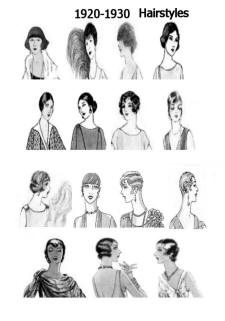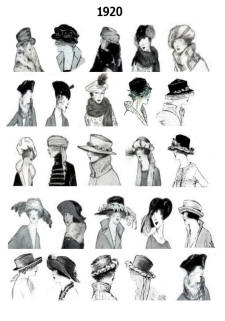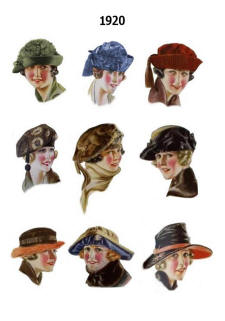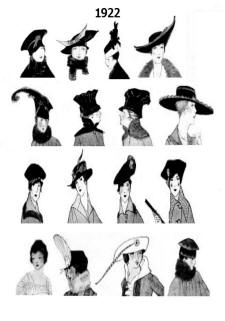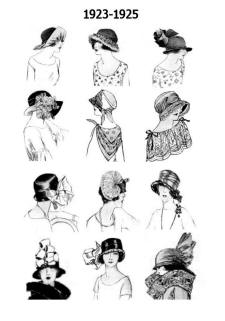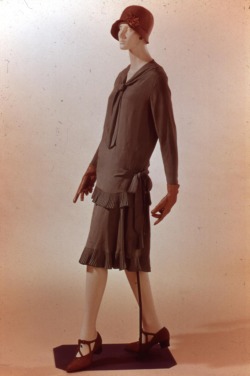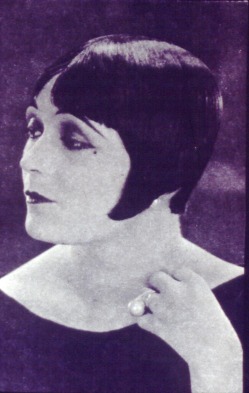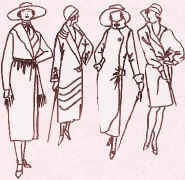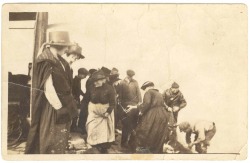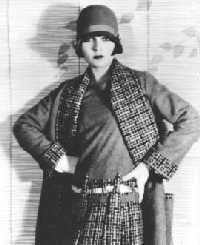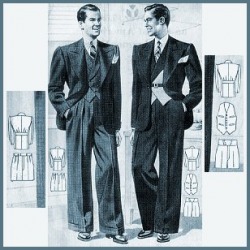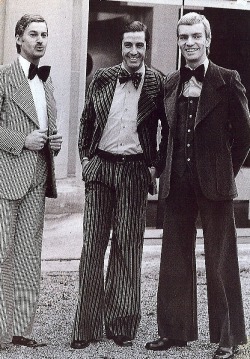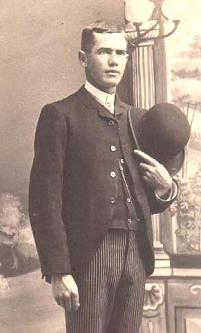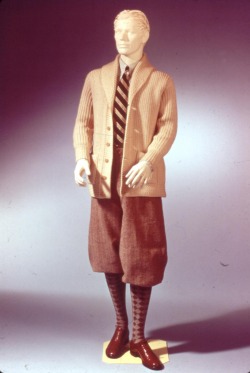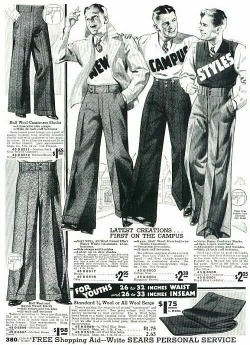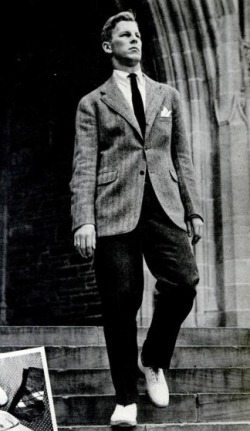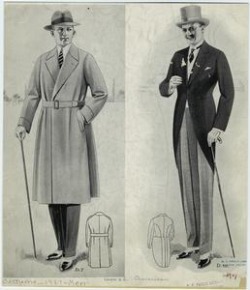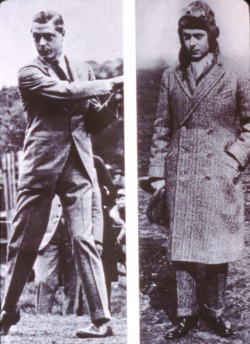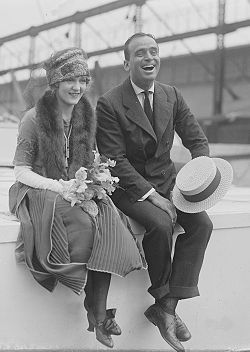Clothes of the 1920's; New Fashions and Styles Arise
It was time to have fun! Women and men were sick of the stressful times of the war-- WW1! They wanted to embrace the fun times of freedom. The 1920s took its turn into a whole different era of fashion! It was time to drop the formal dressing and time to have a blast!
Womanhood had been redefined in the Roaring Twenties. It had become more acceptable for women to smoke and drink in public, wear shorter hair, wear make up, wear vibrant more revealing clothes, make closer body contact when dancing, and have a greater role in the work force. Women loosened up with their clothes. They stopped wearing those tight corsets, bustles and all those layers! During the decade, the corsets of women grew smaller and smaller and more flexible -- in which bras were introduced for the first time. There was a dramatic change in the fashion, which now incorporated a sense of art and freedom! Rather than dull colors and the over-dressed outfits from the Victorian era, women started wearing vibrant dresses that only went one inch past their knee. Dresses were brighter, shorter, and more revealing than ever before -- with rising hemlines and dropping necklines, see-through silk stockings that came in every color of the rainbow, and sleeveless bare shoulders! Women wore beads, make up, t-strap heels and more!
In the 1920s, the new concept of "Movie Stars," "Fans," and "Sports Stars" arose. Once a movie came out, men and women especially took on the look of their stars on screen. The bobbed hair was reintroduced by actress Louise Brooks. The media, movie stars, and sports stars had a great impact on what people wore in the 1920s. When Babe Ruth wore a camel suit, so did almost every other man.
Fashion was greatly influenced by the recent “heroes” of the time, such as the figures golfer Bobby Jones, tennis player Bill Tilden, and swimmer Johnny Weissmuller. Men at this time looked up to these incredible, "perfect" beings and wanted to be just like them. Football player Red Grange promoted raccoon coats and camel hair coats. Charlie Chaplin wore bowler hats and the love of the decade, Charles Lindbergh, started a craze over leather jackets.
Men started wearing patent-leather shoes and patent-leather hair. Patent-leather shoes were worn during the evening. Shoes worn with casual clothes were white, tan, white, or black. Lace-up style shoes were in the most demand. Knickerbockers, later called “knickers,” became very popular for casual wear of well-dressed men. There were many lengths of knickers referred to as plus-fours, plus-sixes, plus-eights, and plus-tens. The “plus” is how many inches below the knee they hung. Norfolk coats and golf coats were often worn with knickers. The coats usually had large pockets, a belt, and one button. Gentlemen shoes were worn with knickers. Popular suits or coats would include sacque suits, tail coats, and tuxedos, which were growing in popularity but not quite acceptable yet.
In 1925, the era of baggy pants had started. Oxford bags were the bee’s knees of the 20s. Oxford bags were first worn by Oxford undergrads; those were enthusiastic circumvent the University’s prohibition of knickers. The bags were 22-24 inches in circumference on the bottom, therefore making it easy for knickers to be slipped on. A man named John Wanamaker introduced Oxford bags to the public in the spring if 1925, even though the Ivy League students visiting Oxford in 1924 ad already adopted the style. Jazz clothing was intermittent concerning popularity during the twenties. These tightly-fitting suits were considered an expression of passion for jazz music. Jackets were long and tight at the waist with long black vents. The buttons were placed close together, whether the jackets were double or single-breasted. Trousers were tight and skinny. This gave a sleek look, and most would accompany the look with a cane.
From peacock plume fans to raccoon coats, look at all the pictures and get a real sense of the fashion from the Roaring 20s!
Pictures of Different Styles of the 20s:
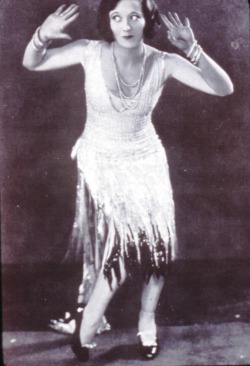
This is yet another flapper of the 1920s. Once again you can see the beaded necklace, the bobbed hair, and the cupid bow lips. But now realize how sparkly her dress and her bracelets are and how high her hemline is and how short her dress is--only one inch below the knees. All these traits were also part of the new era of fashion.
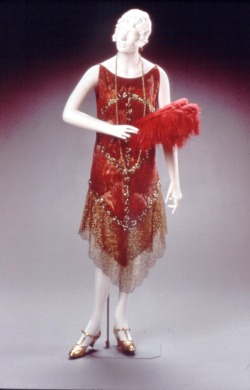
This is a mannequin representing a woman in the 20s dressed for a party. Most party dresses were very sparkly and glittery, sleeveless, and had a low hemline such as this dress. In the 20s, corsets slowly disappeared-- this dress has a breast band to flatten the chest. As you can see, the beaded necklace and t-strapped heels have appeared again. A new thing that should be noticed is the ostrich plume fan. These became common in the 20s along with peacock fans as well.

This is yet another flapper with the expected traits of bobbed hair, a beaded necklace, a sleeveless shirt, make up, t-strapped heels, and a short skirt. Something new to notice is the see through stockings she is wearing, just rolled beneath the knee. Showing the knees in the 1920s was very revealing, but common amoung flappers. Some would even put make up on their knee to make the knee look more appealing for a man.
